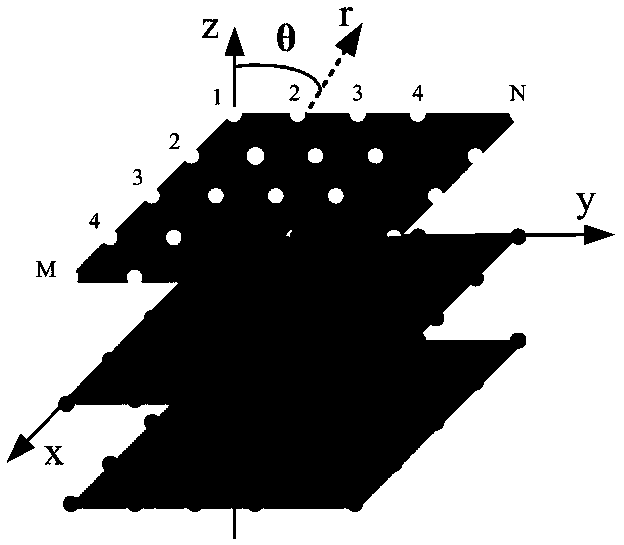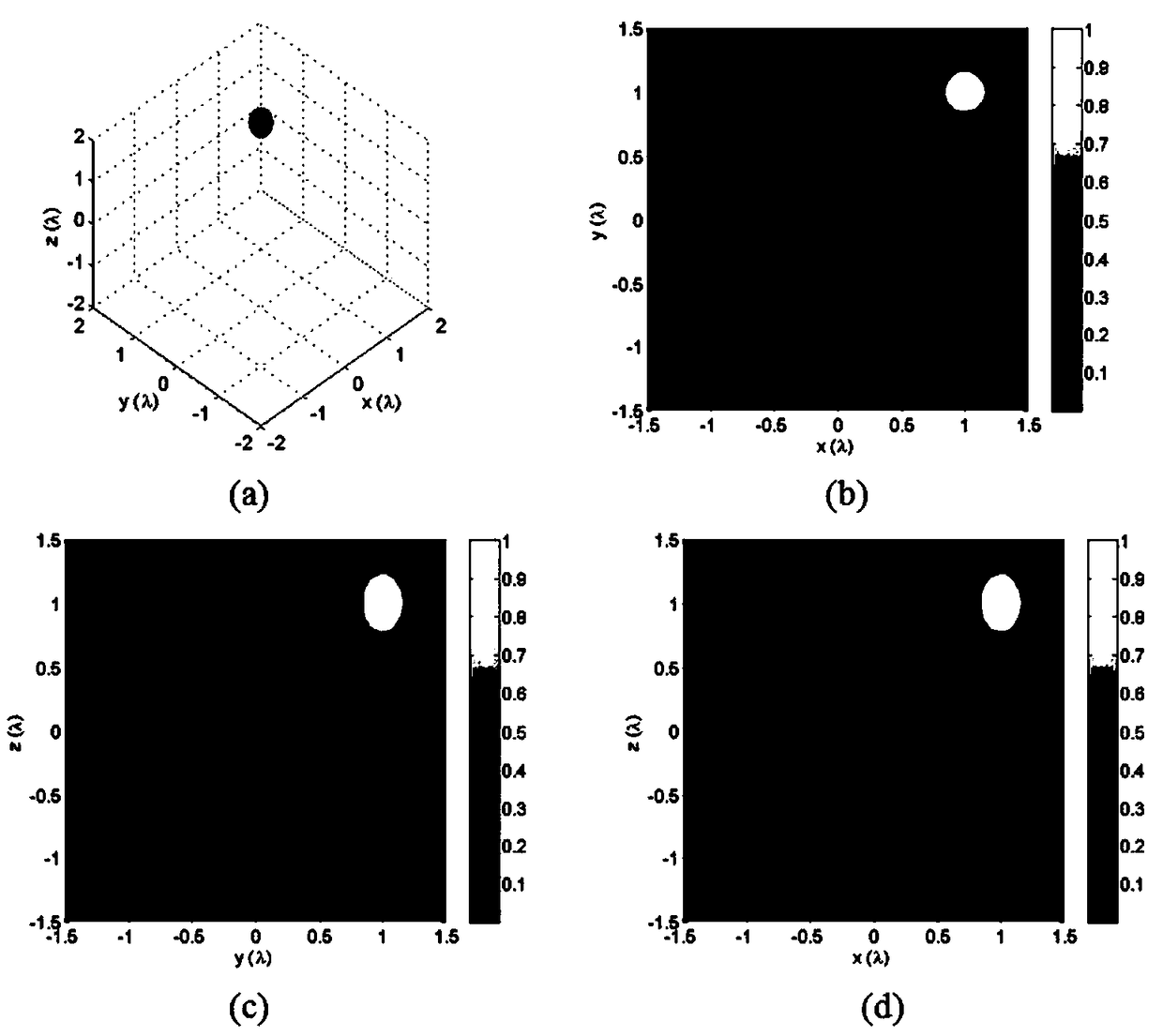Method for generating three-dimensional multi-focal spot array based on spatial dipole array
A method for generating dipoles, applied in optical components, optics, instruments, etc., which can solve the lengthy iterative optimization process, the uniformity of 3D focal spots, the difficulty in controlling the number, position and spacing, the lack of simplicity and flexibility, etc. Questions to achieve a controllable number, customizable location and spacing, and the same intensity
- Summary
- Abstract
- Description
- Claims
- Application Information
AI Technical Summary
Problems solved by technology
Method used
Image
Examples
Embodiment 1
[0089] The constant C is normalized to 1 because it has nothing to do with the shape of the focal spot. At present, reflective lenses or hyperplane lenses are used, and the maximum convergence angle can reach θ max = π / 2. As a first example, suppose a virtual dipole is placed near the focal point of the focusing system (1λ, 1λ, 1λ), and its radiation field is completely collected by the 4π focusing system and reversely converged to the focal region. Using formulas (9)-(11) and (14), the three-dimensional single focal spot located near the focal region can be easily obtained, such as figure 2 (a) shown. from figure 2 It can be clearly seen in (a) that the three-dimensional iso-intensity surface distribution of the focal spot (I=0.5Imax) appears as an ellipsoid rotating around the Z axis, and the reason is that the polarization direction of the virtual dipole is along the Z axis direction. The projections of the focal spot on the XY plane, YZ plane and XZ plane are concentr...
Embodiment 2
[0091] The method of this embodiment can also generate multiple focal spots located at any position in the focal region. image 3 The iso-intensity surface distribution of multiple focal spots at predetermined locations is given. It can be seen that the position of each focal spot is controllable, and the intensity and shape are the same. Similarly, the center position of the l-th focal spot only depends on and is equal to the position coordinates of the l-th virtual dipole in the focal area (x l ,y l ,z l ). image 3 Among them, (a) is two focal spots located at (-λ,λ,λ) and (λ,-λ,-λ); (b) is located at (-λ,-λ,-λ), (0,0 ,0), and three focal spots of (λ,λ,λ); (c) is located at (λ,λ,-λ), (-λ,λ,λ), (-λ,-λ,λ) , and four focal spots of (λ,-λ,λ).
Embodiment 3
[0093] Arrange multiple virtual dipoles along a straight line to form a dipole linear array, and apply formulas (6)-(8), (10), (11) and (14), and a multi-focal Spotted linear array. Figure 4 (a), (b) and (c) respectively give three linear arrays of focal spots arranged along the X-axis, Y-axis and Z-axis. Figure 4 Among them, (a) is that the three focal spots are respectively located at x 1 = -λ,x 2 =0,x 3 =λ; (b) three focal spots are located at y 1 = -λ,y 2 =0,y 3 =λ; (c) is the three focal spots located at z 1 = -λ,z 2 = 0, z 3 =λ.
PUM
 Login to View More
Login to View More Abstract
Description
Claims
Application Information
 Login to View More
Login to View More - R&D
- Intellectual Property
- Life Sciences
- Materials
- Tech Scout
- Unparalleled Data Quality
- Higher Quality Content
- 60% Fewer Hallucinations
Browse by: Latest US Patents, China's latest patents, Technical Efficacy Thesaurus, Application Domain, Technology Topic, Popular Technical Reports.
© 2025 PatSnap. All rights reserved.Legal|Privacy policy|Modern Slavery Act Transparency Statement|Sitemap|About US| Contact US: help@patsnap.com



